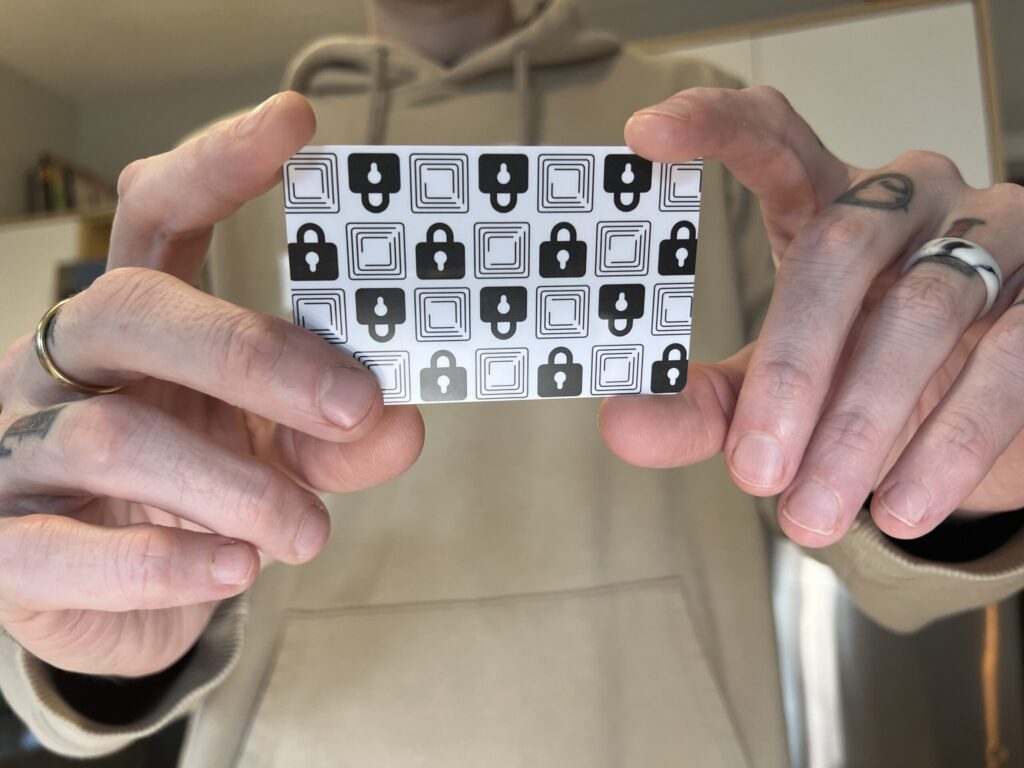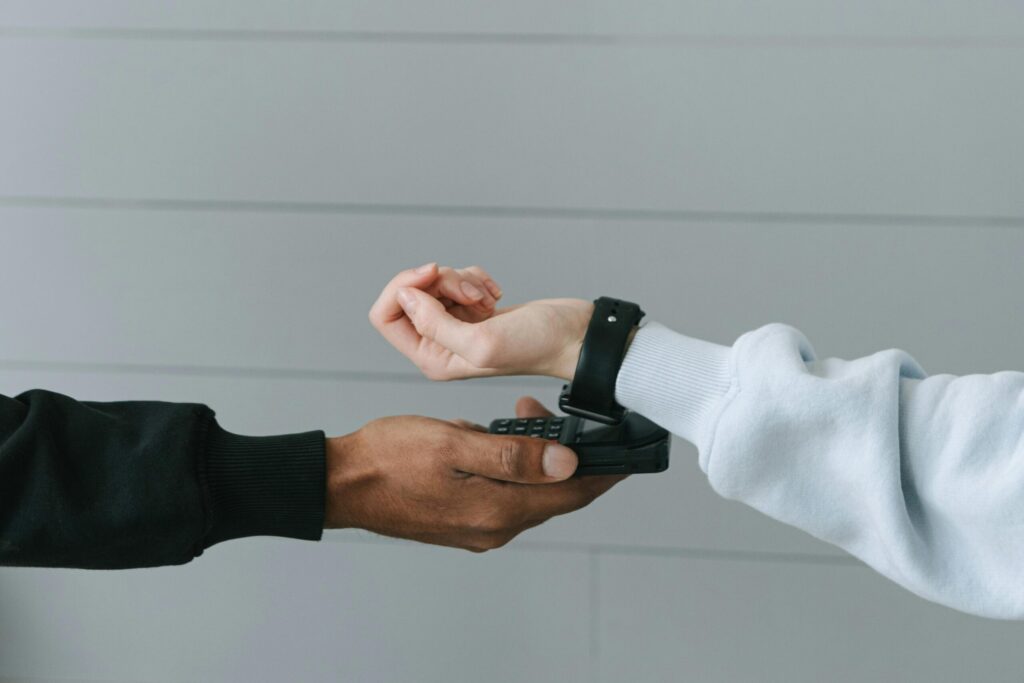I’ll be honest – when I first heard about “wireless theft” and criminals stealing credit card information just by walking near you, I rolled my eyes. It sounded like something out of a spy movie, not real life.
But then my sister-in-law mentioned that her elderly neighbor had unexplained charges on her card. Small amounts – $23 here, $41 there – that she didn’t notice for weeks. When I started digging into this topic, what I discovered made me completely change my mind about wireless security.
The Wake-Up Call That Changed Everything
It started with a conversation at a family barbecue. My brother-in-law works in IT security, and he casually mentioned that he’d started carrying something called an “RFID blocker” in his wallet. When I asked why, he pulled out his phone and showed me a YouTube video of someone using a tiny device to read credit card information through a wallet from several feet away.
“This is happening everywhere,” he said. “Especially in crowded places like airports, subway stations, and shopping centers. The scary part is you’d never know it happened.”
I was skeptical. “Come on, that’s got to be some kind of setup or fake demonstration.”
He shrugged. “Maybe. But for twenty bucks, why take the chance? Especially with Mom and Dad getting older and not checking their statements as carefully as they used to.”
That last comment hit me. My parents are in their seventies, and while they’re sharp, they definitely don’t scrutinize every charge on their credit card statements like they probably should.

Going Down the Research Rabbit Hole
That night, I couldn’t stop thinking about the conversation. I started researching “RFID theft” and “contactless card security,” and what I found was both fascinating and terrifying.
Here’s what I learned: if you have a credit or debit card with that little Wi-Fi-looking symbol on it (and most cards issued in the last few years have it), your card is constantly broadcasting a signal. This “contactless” technology is what lets you tap your card on a payment terminal instead of inserting it.
The convenience is great, but there’s a dark side. Those same radio signals that make tap-to-pay possible can be intercepted by criminals using easily obtainable devices. Some are as small as a smartphone and can be hidden in a backpack, purse, or even built into clothing.
The more I read, the more concerned I became. Police reports from major cities showed increasing cases of this type of theft. The Federal Trade Commission had issued warnings. Even major news outlets were covering the trend.
But what really got my attention were the victim stories. These weren’t dramatic Hollywood-style heists – they were small, repeated charges that people didn’t notice for weeks or months. A few dollars here and there, designed to fly under the radar.
The Personal Test That Opened My Eyes
I decided to do my own investigation. First, I downloaded an app called “NFC Tools” that can read the same type of signals that criminals use. I was shocked to discover that I could read basic information from my own credit cards through my wallet, my wife’s purse, and even through a jacket pocket.
The range wasn’t huge – maybe a few inches to a foot – but in a crowded subway car or busy coffee shop, that’s more than enough for someone with bad intentions.
That’s when I decided to test the most popular solution: RFID blocking cards.

Testing the $20 Solution Everyone’s Talking About
After reading dozens of reviews and comparing different options, I ordered something called Wallet Defender. It’s a simple card about the size and thickness of a credit card that you just slip into your wallet. No batteries, no setup, no complicated instructions.
The concept is straightforward: the card contains materials that block the radio frequencies used by both legitimate payment terminals and illegal scanners. Think of it like a shield that surrounds your other cards.
If you’re curious about the same device I tested, you can learn more about Wallet Defender here.
When it arrived, I immediately put it to the test using the same NFC reading app. The results were impressive – with the Wallet Defender card in my wallet, I couldn’t read any information from my credit cards, no matter how close I held my phone.
But I wanted to test it more thoroughly, so I recruited my tech-savvy nephew who had access to more sophisticated scanning equipment through his computer science program. Even with professional-grade RFID readers, he couldn’t penetrate the protection when the Wallet Defender was present.
The Family Test That Sealed the Deal
The real test came during a family trip to New York City. I brought along my wallet with the Wallet Defender, while my wife carried hers without any protection. We spent three days navigating crowded subways, busy tourist attractions, and packed restaurants – exactly the kind of environments where wireless theft supposedly happens.
Using a portable card reader (legally, just to test), I periodically checked whether we could read card information. My wife’s cards were readable whenever someone got within about eight inches of her purse. My cards? Nothing. The Wallet Defender created a complete dead zone around my entire wallet.
More importantly, it gave me peace of mind. Instead of wondering if that person standing too close in the elevator had ulterior motives, I could just go about my day knowing my cards were protected.
Want the same peace of mind I experienced? Get your own Wallet Defender protection here.
Why This Matters More Than You Think

Here’s what really concerns me about wireless theft: it’s not just about the money. Yes, fraudulent charges are a hassle, but most banks will eventually refund them. The bigger issue is the cascading problems that identity theft can create.
Once criminals have your card information, they often use it to make small purchases to test if the card is active. If those go through unnoticed, they get bolder. They might try to use your information for larger purchases, or even sell your card details to other criminals.
For older adults, this is especially problematic. Seniors are often targeted because they tend to check their statements less frequently and may not be as familiar with digital banking tools that can catch fraud quickly.
My parents, for example, still prefer paper statements and review them maybe once a month. A criminal could potentially make dozens of small charges before they’d even notice.
The Scary Statistics That Made Me a Believer
While researching this article, I discovered some statistics that genuinely alarmed me:
- The Federal Trade Commission reported that identity theft complaints increased by 45% in recent years, with card fraud being the most common type
- Seniors lose an average of $1,800 per incident when they become victims of financial fraud
- Contactless payment fraud has tripled in the past two years as more people adopt tap-to-pay technology
- Most victims don’t realize they’ve been targeted until 30-60 days after the initial theft
These aren’t just numbers – they represent real people who had their sense of security violated and their finances disrupted.

What I Learned About RFID Protection
After months of research and testing, here’s what I discovered about RFID blocking technology:
It actually works. I was initially skeptical, but the physics is sound. The materials used in quality RFID blockers genuinely do interfere with radio frequency transmission.
Not all blockers are created equal. I tested several different products, and there was a significant difference in effectiveness. Some cheap options barely worked, while others like Wallet Defender provided complete protection.
One card protects your entire wallet. You don’t need individual sleeves for each card or a whole new wallet. One properly designed blocking card creates a protective field that shields all the cards around it.
The convenience factor is huge. Unlike RFID-blocking wallets (which can be expensive and force you to change your entire carrying setup), a blocking card works with whatever wallet or purse you already use.
The Peace of Mind Factor
Beyond the technical aspects, what I didn’t expect was how much psychological relief the Wallet Defender would provide. I hadn’t realized how much low-level anxiety I’d developed about card security until it was gone.
Now when I’m in crowded places, traveling, or just going about my daily routine, I don’t have that nagging worry about whether someone might be scanning my cards. It’s one less thing to stress about in an already complicated world.
This peace of mind extends to my family as well. I’ve given Wallet Defenders to my parents, my in-laws, and several friends who travel frequently. Knowing that the people I care about have this basic protection makes me feel better too.
Why I Recommend This to Everyone
After everything I’ve learned and tested, I genuinely believe that RFID protection should be as common as using strong passwords or locking your car doors. It’s a simple, inexpensive precaution that addresses a real and growing threat.
The Wallet Defender specifically impressed me because:
- It just works. No complicated setup, no batteries to replace, no learning curve
- It’s affordable. At around $20, it costs less than most people spend on lunch
- It’s invisible. Once it’s in your wallet, you’ll forget it’s there
- It protects everything. One card shields all your contactless cards, IDs, and even newer passports
- It lasts forever. There’s nothing to wear out or replace
The Bottom Line
I went from being a complete skeptic about wireless theft to someone who won’t leave home without RFID protection. The research opened my eyes to a real threat that’s only going to get worse as more payment systems go contactless.
More importantly, testing the Wallet Defender showed me that there’s a simple, affordable solution that actually works. It’s not a complicated gadget or an expensive new wallet – it’s just a smart piece of technology that provides real protection.
If you carry contactless cards (and most people do), if you have elderly family members who might be targeted, or if you just want one less thing to worry about in today’s world, I strongly recommend getting some form of RFID protection.
The Wallet Defender has earned a permanent place in my wallet, and based on everything I’ve learned, it should probably be in yours too.
Ready to protect yourself and your family? You can learn more about Wallet Defender and get your own protection by clicking here. At less than $20, it’s the cheapest insurance you’ll ever buy – and unlike most insurance, you’ll actually hope you never need to find out how well it works.
